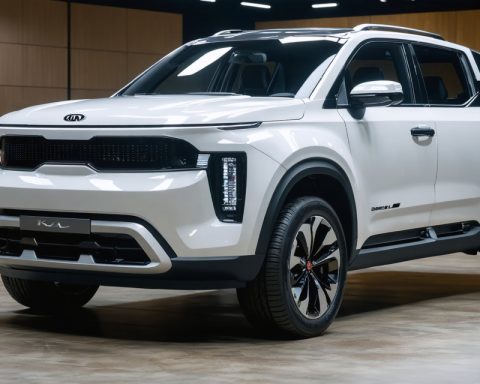The Century Mark: 100 F-35Cs in Fleet
Lockheed Martin has reached a significant achievement with the delivery of its 100th F-35C Lightning II fighter jet, a variant specifically crafted for aircraft carriers. This delivery is a key moment for the program, following the earlier milestone of the 1000th F-35 produced this year.
On December 17, 2024, Lockheed Martin’s F-35 team made the announcement via their official social media channels, celebrating this major addition to the U.S. Navy’s aviation arsenal. While the specific details of the delivery remain under wraps, reports suggest the aircraft had completed test flights in Fort Worth, Texas, just a month prior.
The F-35C: Backbone of Naval Airpower
The F-35C is uniquely designed for CATOBAR (Catapult Assisted Take Off But Arrested Recovery) operations, making it essential for the U.S. Navy. Distinguished by larger wings and reinforced landing gear, it is built to endure the rigorous demands of carrier landings.
The U.S. is currently the exclusive operator of the F-35C, including both the Navy and Marine Corps. The Navy has ambitious plans to field 273 of these jets, supplementing its fleet of F/A-18E/F Super Hornets and replacing older models.
Strategic Deployments and Future Outlook
Recent developments highlight the operational capabilities of the F-35C. Two months ago, the U.S. Navy’s VFA-86 squadron achieved its Safe For Flight Operations Certification. Furthermore, F-35Cs were deployed in combat missions in Yemen, marking their operational debut.
As a cutting-edge, stealth multirole fighter, the F-35C is set to play a pivotal role in modern warfare, proving indispensable in overcoming sophisticated air defenses worldwide.
F-35C’s Rising Influence in Modern Warfare: Key Insights and Future Prospects
The recent delivery milestone of the 100th F-35C Lightning II fighter jet by Lockheed Martin reflects pivotal advancements and growing strategic significance in naval aviation. Specifically designed for aircraft carriers, the F-35C is a crucial element in the U.S. Navy’s modernization efforts. Here, we explore the broader implications of this milestone and the future trajectory of the F-35C program.
Features and Innovations of the F-35C
The F-35C variant incorporates several design elements that make it particularly suitable for carrier-based operations. Key features include:
– Larger Wingspan: The extended wings provide enhanced stability and lift during catapult-assisted take-offs.
– Reinforced Landing Gear: This feature supports the high stresses of carrier landings, essential for maritime operational demands.
– Advanced Stealth Capabilities: The F-35C integrates cutting-edge stealth technology, minimizing detection by adversary radar and enhancing survivability in contested environments.
Operational Use Cases
The F-35C has already demonstrated its effectiveness in various operational scenarios. Recent deployments include combat missions in Yemen, where its advanced capabilities were successfully leveraged. The certification of the U.S. Navy’s VFA-86 squadron also underscores the readiness and reliability of these aircraft in real-world missions.
Strategic Importance and Future Goals
The continued integration of the F-35C into the U.S. Navy’s arsenal is a testament to its role as a backbone of naval airpower. With plans to acquire 273 units, the F-35C will complement existing aircraft such as the F/A-18E/F Super Hornets, eventually replacing older models and enhancing overall fleet capabilities.
Predicted Trends and Market Analysis
As geopolitical tensions rise and defense budgets expand, the demand for versatile, high-performance aircraft like the F-35C continues to grow. Analysts predict that the U.S. will remain the primary operator of this variant, while opportunities for international sales, although limited by current exclusivity, could emerge if geopolitical scenarios shift.
Security Aspects and Compatibility
Security remains a top priority for the F-35C program. Advanced cybersecurity measures are integrated to protect sensitive onboard systems from potential threats. Additionally, the aircraft’s compatibility with existing naval carrier platforms ensures seamless integration into current operational frameworks.
Sustainability and Environmental Considerations
In line with broader defense industry trends, sustainability in the production and operation of the F-35C is receiving increased attention. Steps are being taken to reduce the environmental footprint of the manufacturing process, and ongoing research aims to enhance fuel efficiency during operations.
For comprehensive insights into Lockheed Martin’s innovations and understanding their role in defense, visit the official Lockheed Martin website.












